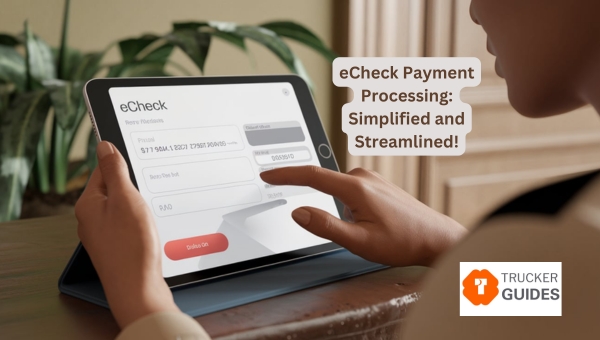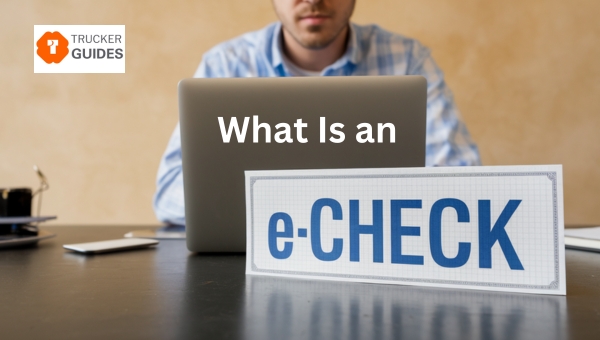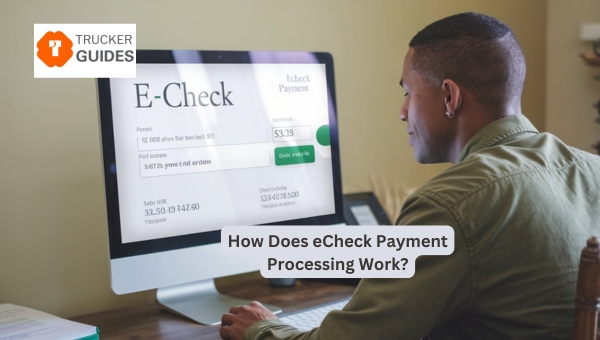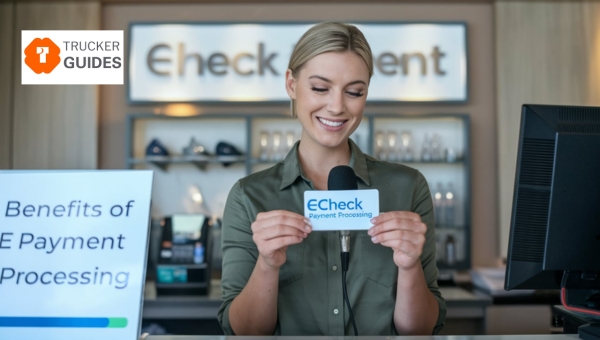eCheck Payment Processing [Simplified and Streamlined]


The world of eCheck payment processing can seem daunting, but fear not! In this article, we’ll break down what an eCheck is, how eCheck payment processing works, and explore its benefits.
We’ll also guide you on sending an eCheck payment and tackle common challenges with practical solutions. Whether you’re new to this or looking to optimize your payment methods, we’ve got you covered.
An eCheck, short for electronic check, is a digital version of a traditional paper check. Instead of writing out a check by hand, the entire process is done electronically. This means no need for physical paper, making transactions faster and more convenient.

eChecks are processed using the Automated Clearing House (ACH) network, which is a secure system for moving funds between bank accounts in the United States. Essentially, when you use an eCheck, the funds are directly withdrawn from your bank account and deposited into the recipient’s account.
This method is widely used for its efficiency, security, and cost-effectiveness, especially for recurring payments or large transactions.
Also Read: 7 Best Reputation Management Services to Help Grow Your Brand
eCheck payment processing might seem complex, but it’s simpler than you think.

Let’s break it down into three easy-to-follow steps: requesting authorization from the customer, submitting the payment to the processor, and finally, funds getting deposited.
The first step in eCheck payment processing is getting your customer’s approval. This usually involves the customer providing their bank account details, including the account number and routing number.
They may give this information online, over the phone, or through a signed authorization form. It’s crucial to ensure that the customer fully agrees to the transaction, often by confirming through a secure method.
Once you have authorization, the next step is to submit the payment details to the payment processor. Here’s how this typically unfolds:
After the payment processor has done its job, the final step is depositing the funds. This part involves:
Also Read: Top 7 Best PPC of Agencies to Maximize Conversions Now
When it comes to payment methods, eChecks offer several advantages that make them a smart choice for businesses and consumers alike. Let’s explore some key benefits that make eCheck payment processing stand out.

One of the significant benefits of eCheck payment processing is the lower transaction fees compared to credit or debit card payments.
With eChecks, the processing times are much quicker than traditional paper checks. Here are some ways this can benefit you:
Security is always a top priority, and eChecks provide enhanced security features to protect both businesses and consumers.
Also Read: Top-Rated 8 Best Factoring Companies for Your Business
Sending an eCheck payment is straightforward and convenient. Here’s a step-by-step guide to help you through the process:
Navigating the world of eCheck payment processing can come with its own set of challenges. But don’t worry, we’ve got you covered! Here, we’ll delve into two common issues and how to tackle them effectively.
Fraud is a significant concern when it comes to eCheck payment processing. To mitigate this risk, it’s crucial to implement strong verification procedures.
These can include using advanced encryption methods to protect sensitive information and employing multi-factor authentication to ensure that only legitimate transactions are processed.
Regularly updating your security protocols and educating your team on the latest fraud prevention techniques can also go a long way in safeguarding your transactions. Additionally, monitoring transactions in real-time allows for immediate action if any suspicious activity is detected.
Some customers may be hesitant to switch to eCheck payments due to unfamiliarity or distrust in the process. To overcome this reluctance, it’s important to provide clear, simple instructions on how eCheck payments work, emphasizing their safety and convenience.
Highlighting the benefits, such as lower transaction fees and faster processing times, can also make a compelling case. Offering customer support to address any questions or concerns will further ease their transition.
Building trust through transparent communication and positive user testimonials can also help in making customers feel more comfortable with this payment method.
Also Read: 8 Best Merchant Services
eCheck payment processing offers a seamless, secure, and cost-effective way to handle transactions. By understanding the steps involved and the benefits, you can make informed decisions for your business. From lower transaction fees to enhanced security, eChecks are a reliable choice for many.
Transitioning to eChecks can streamline your processes, making your financial operations smoother and more efficient.
If you found this guide helpful, explore more articles on our site to keep learning and growing your knowledge. Don’t miss out on our other informative posts!